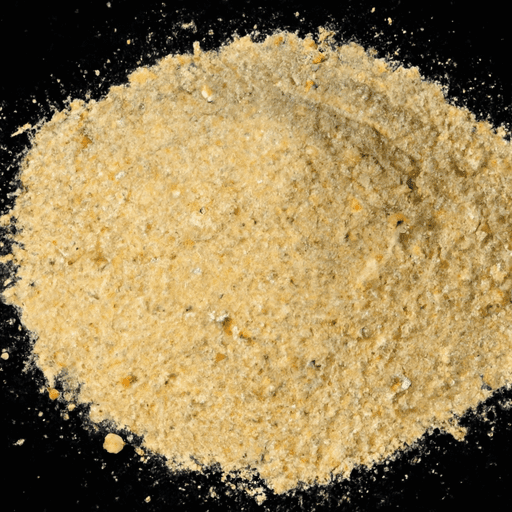Seasoned Bread Crumbs: Adding Crunch and Flavor to Your Dishes
If you’ve ever wanted to add a satisfying crunch and a burst of flavor to your favorite recipes, look no further than seasoned bread crumbs. These pantry staples are versatile, easy to use, and can take your cooking to a whole new level. In this blog post, we’ll explore the taste, common uses, nutritional value, and even some interesting history and facts about seasoned bread crumbs.
The Taste
Seasoned bread crumbs are made by drying and crushing bread into fine crumbs, which are then seasoned with a variety of herbs, spices, and sometimes cheese. The result is a blend that adds texture and a savory taste to your dishes. Depending on the ingredients used, seasoned bread crumbs can have a mild, herby flavor or a more robust, spicy kick.
Common Uses in Cooking
Seasoned bread crumbs are incredibly versatile and can be used in a wide range of dishes. Here are some popular culinary applications:
1. Coating for Fried Foods: Breaded and crispy, seasoned bread crumbs are perfect for coating chicken, pork chops, fish fillets, or even vegetables before frying. The crumbs provide a crispy exterior while sealing in moisture, resulting in deliciously juicy bites.
2. Topping for Casseroles and Baked Dishes: Sprinkle seasoned bread crumbs over casseroles, macaroni and cheese, or au gratin dishes for a delightful crispy topping. This adds a contrasting texture to creamy and cheesy fillings, taking your dish to another level of deliciousness.
3. Stuffing and Meatballs: Seasoned bread crumbs are a key ingredient in stuffing, whether you’re making it for Thanksgiving or simply stuffing a chicken breast. They also make an excellent binder for meatballs, helping to retain moisture and add extra flavor.
4. Crust for Oven-Baked Chicken or Fish: For a healthier alternative to frying, seasoned bread crumbs can be pressed onto chicken breasts or fish fillets and then baked. The result is a crisp, golden crust that elevates the dish without the need for excessive oil.
5. Breading for Vegetables: Seasoned bread crumbs can transform an ordinary vegetable into a flavorful side dish or appetizer. Try coating zucchini fries, onion rings, or even stuffed mushrooms with seasoned bread crumbs before baking or frying for a satisfying crunch.
Nutritional Value
While seasoned bread crumbs are primarily used for their taste and texture, they also offer some nutritional value. Bread crumbs are a good source of carbohydrates, which provide energy for your body. Additionally, they can be a source of dietary fiber, particularly if made with whole grain bread. Seasoned bread crumbs are usually low in fat, making them a healthier option compared to other types of breading or coating.
Interesting History and Facts
Did you know that breadcrumbs have been used for centuries in various cuisines? In ancient times, they were often used as a way to stretch meals and add bulk to dishes. One of the earliest recorded uses of breadcrumbs is in Italian cuisine, where they were sprinkled on top of pasta to add a crispy element. Today, bread crumbs are used in cuisines around the world, each with their own unique variations and flavor combinations.
Conclusion
Seasoned bread crumbs are a versatile ingredient that can add an irresistible crunch and flavor to your cooking. From coating fried foods to topping casseroles and even stuffing, their uses are diverse and delicious. Plus, they provide some nutritional value without sacrificing taste. So, go ahead and explore the world of seasoned bread crumbs, and give your recipes that extra dimension of texture and flavor that will have your taste buds dancing with joy.
Seasoned Bread Crumbs
Origin: Bread crumbs have been used in cooking for centuries. The method of making bread crumbs dates back to Ancient Egypt, where stale bread was ground into crumbs and used as a coating for various dishes. Seasoned bread crumbs are believed to have originated in Italian cuisine and are commonly used in Mediterranean and Italian dishes.
Common Uses: Seasoned bread crumbs are versatile and can be used in various ways in cooking. They are often used as a coating for meats, poultry, and fish, providing a crisp and golden crust when baked or fried. They can also be used as a topping for casseroles, gratins, and macaroni and cheese, adding a crispy texture. In some recipes, seasoned bread crumbs can be mixed into meatballs, meatloaf, or stuffing to enhance flavor and texture.
Nutritional Benefits: Bread crumbs, including seasoned varieties, can provide some nutritional benefits. They are a source of carbohydrates, providing energy. However, they are typically low in fiber and protein. The nutritional content can vary depending on the bread used to make the crumbs. Whole wheat bread crumbs may have a higher fiber content compared to those made from white bread. Seasoned bread crumbs often contain herbs, spices, and sometimes cheese or garlic, which can add flavor but may also increase the sodium content.
Unique Properties: Seasoned bread crumbs often feature a mixture of herbs, spices, and sometimes grated cheese, providing additional flavor to dishes. Common herbs and spices used in seasoned bread crumbs include parsley, oregano, thyme, basil, and garlic powder. Some variations may also include grated Parmesan or Romano cheese. Bread crumbs act as a binder and absorb moisture, creating a crunchier texture when used as a coating or topping.
Historical Significance: While there isn’t specific historical significance associated with seasoned bread crumbs, the use of bread crumbs in cooking has a cultural and historical significance. The act of using bread crumbs to coat and enhance dishes dates back to ancient times, where resourcefulness played a crucial role in minimizing food waste. The tradition of utilizing stale bread in cooking has been passed down through generations and is still prevalent in many culinary traditions worldwide.




Use the share button below if you liked it.
It makes me smile, when I see it.